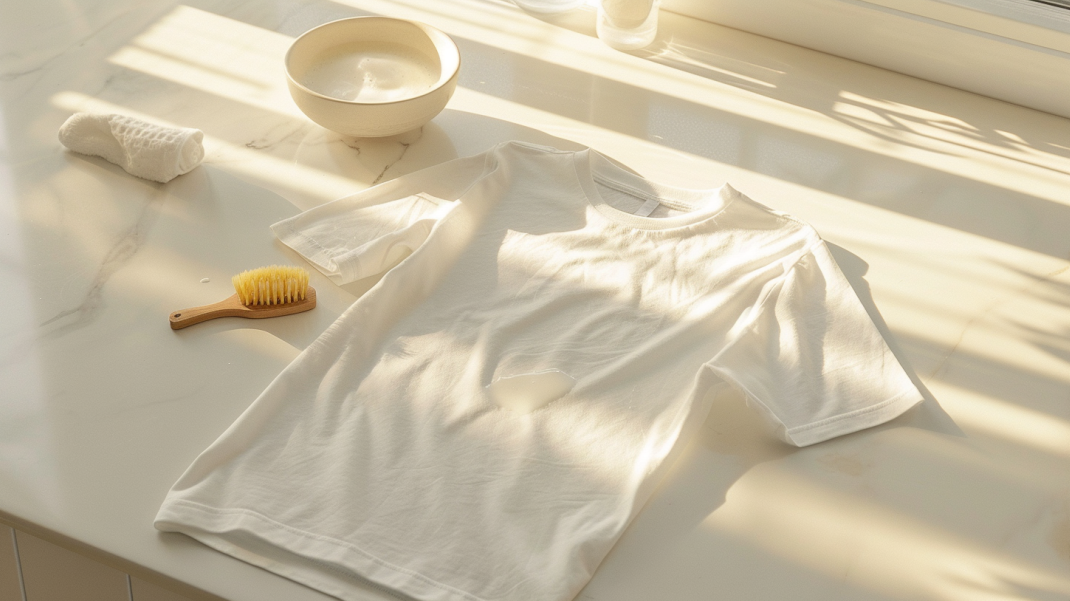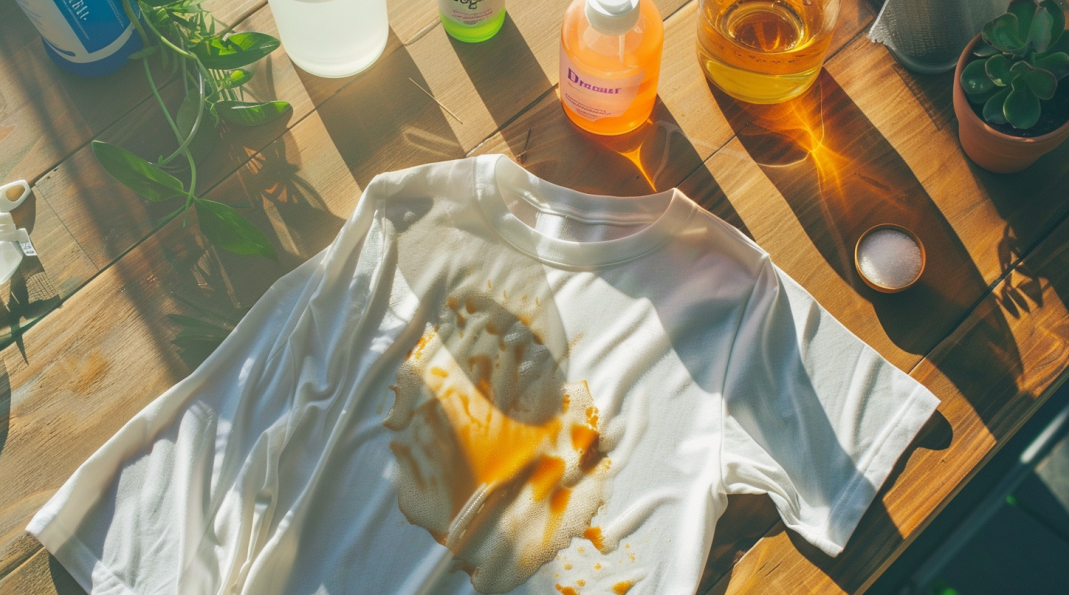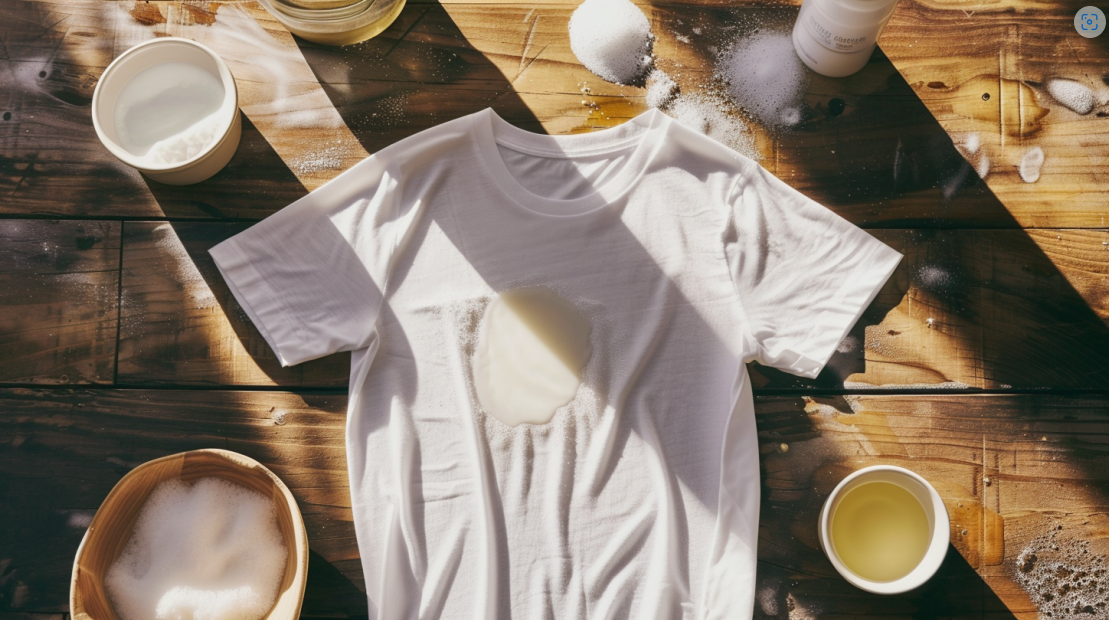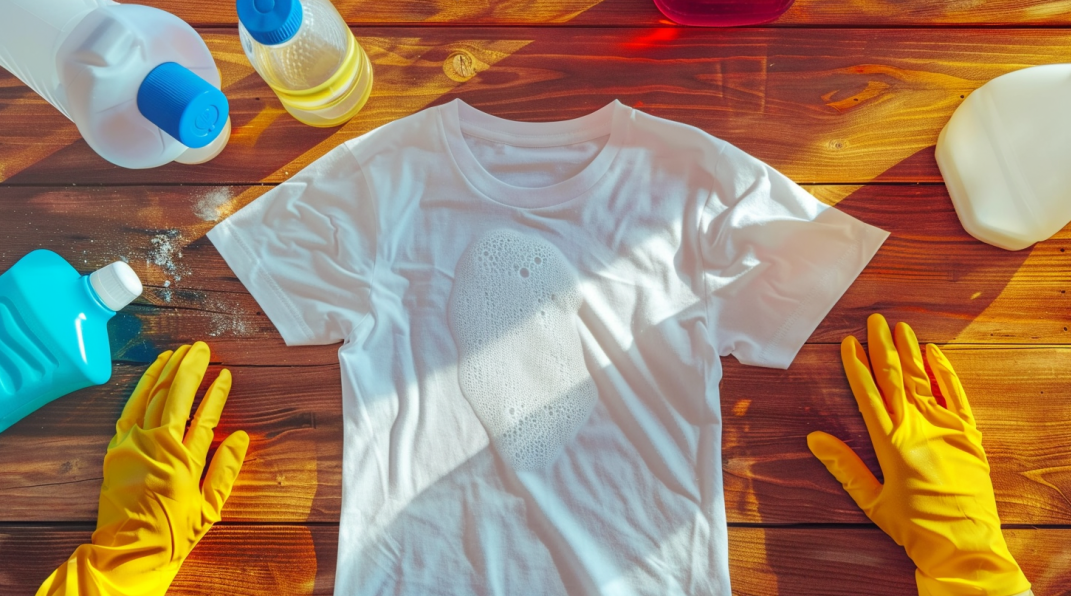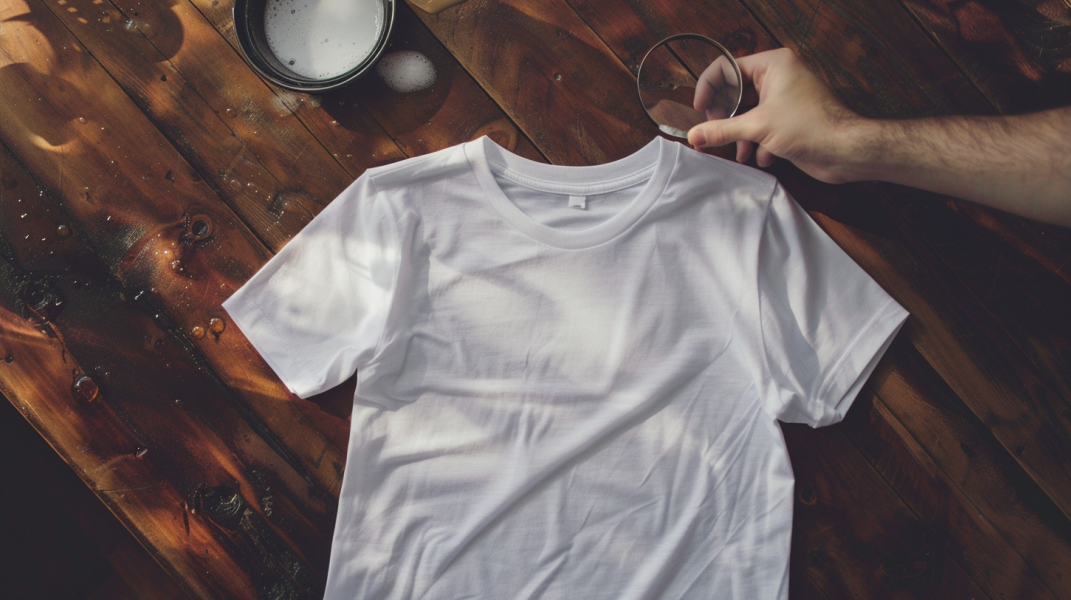Sometimes, accidents happen in the kitchen, leaving you with an unwelcome grease mark on your favorite t-shirt. You might think that stain is a permanent reminder of your culinary mishap, but it doesn’t have to be. By taking swift action and following a few straightforward steps, you can restore your garment to its former glory. Let’s explore the best methods to tackle those stubborn grease stains effectively, ensuring your t-shirt looks as good as new in no time with Yes T-Shirt now!
Key Takeaways
- Blot fresh grease stains with a paper towel to absorb excess oil without rubbing, which can spread the stain further.
- Apply dish soap directly to the stain, allowing it to cut through the grease; leave baking soda or cornstarch to absorb oil before brushing off.
- Use liquid detergent on the stain, following fabric care labels for water temperature and washing cycle recommendations.
- Rinse thoroughly to remove detergent residue, and repeat treatment if necessary before drying to avoid setting the stain permanently.
- Inspect the fabric post-wash for any remaining stains, re-treat if needed, and ensure proper storage to prevent future stains.
Identify the Type of Stain
When tackling a grease stain on your favorite t-shirt, the first step is to identify the type of stain you’re dealing with. Grease stains can come from various sources like cooking oil, butter, or even salad dressings. Each of these stain types may require a different treatment approach, so it’s vital to recognize the origin of the stain before proceeding.
Next, consider the fabric of your t-shirt. Different materials react uniquely to cleaning agents. For instance, cotton is generally more forgiving and can withstand harsher treatments, while delicate fabrics like silk or polyester may need a gentler approach. Check the care label to understand the fabric’s composition and avoid any cleaning methods that could cause damage.
Once you’ve identified the stain type and considered the fabric, you’ll be better equipped to select the right cleaning solution. This knowledge can save you time and help you avoid further staining or damage. With this significant information in hand, you’re ready to tackle the stain effectively and restore your t-shirt to its former glory.
Act Quickly for Best Results
Acting fast is essential when it comes to removing grease stains from your t-shirt. The longer you wait, the more difficult it becomes to lift the stain. Quick action is key, as fresh stains are easier to treat than those that have set in. When you notice a grease mark, don’t hesitate—head to your kitchen or laundry room for immediate stain removal techniques.
Start by grabbing a paper towel or cloth to gently blot the stain, absorbing as much grease as possible. Avoid rubbing, as that can spread the stain further. If you have dish soap on hand, apply a small amount directly to the stain. Dish soap is designed to cut through grease, making it an effective choice for this type of stain.
After applying the soap, let it sit for about 5 to 10 minutes to allow it to penetrate the fabric. This quick action can considerably improve your chances of complete removal. Once the time’s up, rinse the area with cold water and assess the stain. If it’s still visible, repeat the process before washing the t-shirt as usual. Remember, staying proactive is your best bet for a successful stain removal!
Blot the Stain Carefully
Once you’ve acted quickly, it’s time to blot the stain carefully. Grab a clean cloth and gently press it against the grease mark, soaking up as much of the oil as possible. Remember, avoid rubbing harshly, as this can spread the stain and make it harder to remove.
Use a Clean Cloth
To effectively tackle a grease stain, you’ll want to start by grabbing a clean cloth or paper towel. This is essential for successful stain removal, as using a dirty cloth could smear the grease further. Once you have your clean cloth, gently blot the stain. Make certain to use a light touch; pressing too hard can push the grease deeper into the fabric.
Start at the outer edges of the stain and work your way inward to avoid spreading it. As you blot, you’ll see the cloth absorb the grease. Remember to frequently switch to a new section of the cloth or use a fresh paper towel to maximize its effectiveness.
If you have cleaning supplies like dish soap or a commercial stain remover on hand, apply a small amount directly to the grease stain once you’ve blotted as much as possible. This will help break down the grease, making it easier to lift out when you move to the next step. Patience is key; take your time to guarantee that you don’t miss any residue, as that’ll make the stain harder to remove later on.
Avoid Rubbing Harshly
After you’ve blotted the stain with a clean cloth, the next step is to avoid rubbing harshly, as this can worsen the stain. Instead of scrubbing, gently dab the area to lift the grease without pushing it deeper into the fabric. Harsh rubbing can damage the fibers of your t-shirt, making stain removal more difficult and risking fabric care issues.
Here’s a quick guide to help you visualize your approach:
| Action | Description |
| Blot | Use a clean cloth to absorb the stain. |
| Dab, Don’t Rub | Apply gentle pressure; don’t scrub. |
| Rinse with Water | Use cold water to help lift the stain. |
| Check Before Drying | Verify the stain is gone before drying. |
Apply the Right Cleaning Agent
When tackling grease stains on a T-shirt, choosing the right cleaning agent is vital for effective removal. You’ll find a variety of cleaning products designed specifically for stain removal, and selecting the right one can make all the difference. Start with a dish soap or a laundry detergent that contains enzymes, as these ingredients break down grease effectively.
Apply a small amount directly onto the stain and gently work it in with your fingers or a soft brush. If you prefer a more natural approach, consider using baking soda or cornstarch. Both can absorb grease; sprinkle them on the stain and let them sit for about 15 minutes before brushing off.
For tougher stains, you might want to try a commercial stain remover. Always read the label to verify it’s safe for your T-shirt’s fabric. Remember, the sooner you act on the stain, the more effective your cleaning product will be. Avoid washing the shirt until you’ve treated the stain properly, as heat from the dryer can set the grease permanently. With the right cleaning agent, you’re one step closer to restoring your favorite T-shirt!
Wash and Rinse Properly
Washing and rinsing your T-shirt properly is essential for completely removing grease stains and preventing any lingering residue. Start by choosing the right detergent type; liquid detergents are often more effective on grease compared to powders. Look for those specifically labeled for removing stains, as they contain enzymes that break down oil.
Before tossing your T-shirt in the washing machine, check the care label for the recommended water temperature. Hot water can be effective, but it’s important to confirm it’s safe for your fabric. Use a gentle cycle to avoid damaging the material while still providing a thorough clean.
When the cycle’s complete, rinse your T-shirt well. A good rinse helps wash away any detergent residue, which can attract dirt if left on the fabric. If you have access to a second rinse cycle option, use it—this is one of the best laundry tips for ensuring your T-shirt is truly clean.
Lastly, avoid overcrowding the washing machine. Giving your T-shirt enough space to move around enhances the washing process, ensuring that grease stains are lifted effectively.
Check for Residual Stains
After washing your t-shirt, take a moment to inspect the fabric carefully for any remaining grease stains. If you spot any, assess the severity of the stain to determine your next steps. Addressing residual stains promptly can save your shirt from permanent damage.
Inspect Fabric Carefully
Before you start treating your grease-stained t-shirt, it’s important to inspect the fabric carefully for any residual stains. Different fabric types may react differently to stain removal methods, so knowing what you’re working with can save you time and effort. Take a good look at the t-shirt to identify any remaining grease or discoloration, especially if the stain has a distinctive color.
Here are a few tips to help you inspect your fabric effectively:
- Check both sides: Sometimes stains can seep through, hiding on the reverse side.
- Look for color variations**: Stain colors can indicate the type of grease or oil, guiding your treatment method.
- Feel for texture changes: Grease can leave a residue that alters the fabric’s feel, signaling you to pay extra attention.
Identify Stain Severity
Often, you may find that not all grease stains are created equal, so it is crucial to identify the severity of the stain before proceeding. Start by examining the t-shirt closely. A fresh stain might only require a simple treatment, while older or set-in stains may need more intensive methods.
Check the fabric type, as different materials respond differently to grease removal techniques. For instance, cotton can often withstand stronger treatments, while delicate fabrics like silk may require a gentler approach.
Next, assess the size and depth of the stain. A small, shallow stain might lift easily with a pre-treatment, while a larger or deeper stain could necessitate soaking or multiple treatment applications. If you notice any discoloration around the stain, this could indicate that it is more severe, requiring caution to avoid further damage.
Lastly, after treating the stain, check for residual stains before drying the shirt. Once dried, grease stains can set permanently, making them harder to remove. By understanding stain severity, you can choose the most effective method to restore your favorite t-shirt.
Frequently Asked Questions
Can I Use Vinegar to Remove Grease Stains From My T-Shirt?
Yes, you can use vinegar for grease stain removal. Its acidity helps break down grease effectively. Mix equal parts vinegar and water, apply it to the stain, and let it sit before washing for best results.
What if the Stain Has Already Dried?
Imagine a stubborn dried stain, like a badge of honor you never asked for. For effective stain treatments, try applying a mixture of dish soap and vinegar, gently rubbing it in for successful dry stain removal.
Are There Specific Fabrics More Prone to Grease Stains?
Yes, synthetic fabrics like polyester often attract grease stains more than cotton blends. Their smooth surface makes it easier for oils to settle in, creating stubborn stains that require extra care and attention to remove effectively.
Is It Safe to Iron a Stained T-Shirt?
You shouldn’t iron a stained t-shirt before removing the stain. Heat can set the stain, making it harder to remove later. Prioritize stain removal first, and always follow fabric care instructions to maintain your t-shirt’s quality.
How Can I Prevent Future Grease Stains on Clothing?
Picture your favorite outfit, free from stains. To prevent grease stains, use stain prevention tips like wearing aprons while cooking, treating spills immediately, and practicing proper clothing care. With these steps, you’ll keep your wardrobe pristine.
Conclusion
In the battle against grease stains, speed and precision matter. By acting quickly and using the right techniques, you can transform a stained t-shirt into a clean canvas. Don’t let that stubborn mark win; with just a few simple steps, you can reclaim your favorite shirt. Remember, a little effort now saves you from the frustration of lingering stains later. So, roll up your sleeves and tackle that grease—your t-shirt deserves a second chance!


